On watch
for the coming of wonders.
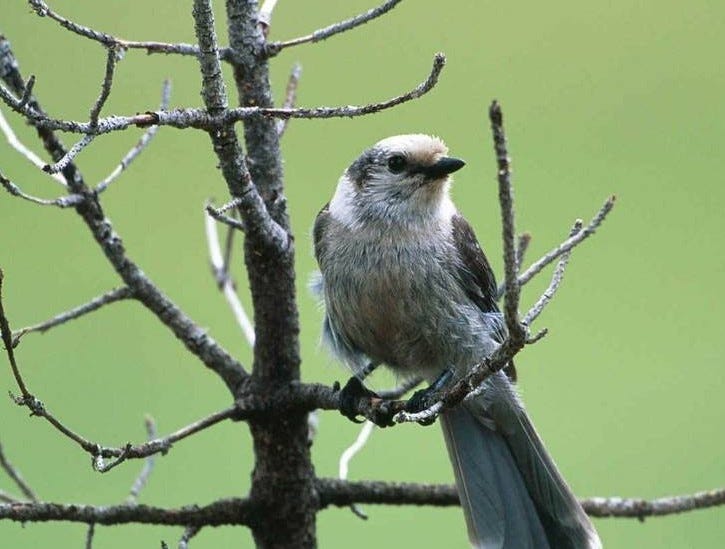
“It is this way with wonder: it takes a bit of patience, and it takes putting yourself in the right place at the right time. It requires that we be curious enough to forgo our small distractions in order to find the world.” ~ Aimee NezhukumatathilSome of my earliest memories are images and characters (animals primarily) from dog-eared children’s books, vividly imprinted decades after reading them.
Recently I went down memory lane in pursuit of a particular favorite whose title had long eluded me. Emblazoned in my mind is Diane Redfield Massie’s cheerfully painted treehouse with its leaking roof, perfectly perched in the branches of a kapok tree. And the humble sloth living there who hosts his rainforest-dwelling friends—a rat, armadillo, and toucan—to a birthday party, despite the “terrible mess” of his disheveled abode.
Like so many well-loved fables, there is an intended takeaway. As the celebration concludes joyously amid Sloth’s comfortable chaos, readers are gently reminded that they can be loved as themselves—messes included. And can strive to love others equally.
One of the aspects I have always found entrancing—yet simultaneously disconcerting—about children’s books is how often the idyllic world depicted on the page bears little resemblance to the real world being modeled, or inhabited, around them.
I wish it weren’t so.
At what point do children begin to identify that disconnect? Early I think. The age of innocence is short-lived for far too many.
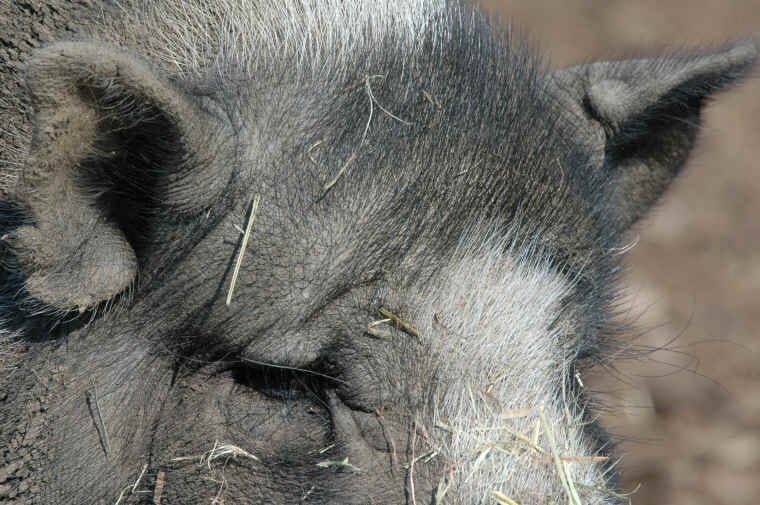
"Human beings must always be on the watch for the coming of wonders." ~ E.B. WhiteIt’s one of the reasons I have always adored E.B. White’s Charlotte’s Web —a book thoughtfully woven into countless memories, mine included. White cultivates exquisite concern for, and connection with, species too often deprived of even a grain of compassion (pigs, spiders, and rats). And more, he skillfully reveals to readers of all ages an acknowledgement of this hard truth, paired with a devoted desire to challenge it.
When White’s remarkable spider spins her silken strands into “Some Pig” and other messages, inducing awe to save her dear friend from his pernicious slaughter edict (the painful destiny of most pigs born on Earth), it is deemed a welcome miracle by all. So much so that the local minister celebrates Charlotte’s compassionate feat with his human congregation, advising them to remain “on the watch for the coming of wonders.”
My favorite line is spoken by the town doctor who opines that “when the words [in the web] appeared, everyone said they were a miracle. But nobody pointed out that the web itself is a miracle.''
Wonder, White instructs us from the heart, is everywhere we look. The ability to see the extraordinary in the ordinary transforms us into viewers of everyday miracles. And such perspective inspires our innate gratitude and kindness. Even—and maybe especially—in a world too often steeped in cruelty and indifference.
“Science often leads me to the door of wonder, teaching me to see new things with my eyes. But practice is what trains me to enter, leaving behind my sight.” ~ Rachael Petersen So why do we resist? The world, broken as it seems, contains more wonder than we can possibly know what to do with. A veritable bounty of fascination in every nook and cranny.
Yet we’re apt to miss it, again and again. Which may be more consequential than we realize.
Even wonder’s definitions are entrancing. So why aren’t we “struck with astonishment” more often? “Affected with surprise or admiration” by the curious counterpoints of life’s fragility and simultaneous resilience. There is so much to be amazed by, to marvel at, and to “[a]wait with uncertain expectation.” To “query in the mind” and, yes, soul.
Celtic mystic and writer John O’Donohue gives one possible explanation for our hesitance, remarking in his lovely musings on the transformative power of awe that fear is actually “negative wonder.” While others may have different reasons for resisting, this really struck me like a thunderbolt.
O’Donohue goes on to say that when we live our lives in the grip of fear, as so many of us do, we often compromise—“settl[ing] for something that is safe, rather than engaging the danger and the wildness that is in our own hearts.” Confined by the limits of what we know (which is actually very little given the magnitude of the universe) instead of propelled toward the limitlessness of what we don’t.
It’s why I admire how bell hooks goes precisely to that same fraught space with her kindly counsel, stating that “when we drop [our] fear, we can draw nearer to people, we can draw nearer to the Earth, we can draw nearer to all the heavenly creatures that surround us.”
Whatever the barrier, the solution is the same: unlock your shield and let yourself bathe in the beauty all around us.
The gateway to wonder, in other words. In its infinite forms.
“Put yourself in the way of beauty.” ~ Cheryl Strayed, Wild Easier said than done in a world on fire. There is so much to fix, and to face. To fear.
It brings to mind a memorable passage from a compelling Tony Hillerman mystery set on Navajo land. In it he explores the ancient and foundational Navajo practice of Hózhó which Hillerman describes as “a combination of beauty [and] harmony, being in tune, going with the flow, being peaceful, all wrapped up in a single concept.”
The Navajo People (Dine) have summarized it more succinctly as simply “walking in beauty.” Profoundly, I learned that when this way of being deteriorates inside somebody, healers are sometimes called in to restore that person’s ability to “get back to beauty.”
An antidote to negative wonder I’d argue most of us could benefit from even in a world ablaze.
“There's a phrase that came out of a study about the incredible health benefits from an intentional practice of gratitude: Take in the good. It’s not even about getting more optimistic. It's just saying, I'm going to attend to that. I'm going to give that my attention.” ~ Krista Tippett, On BeingI’ve shared before that my husband has a penchant for slugs—from the impossibly tiny to the gargantuan. He adores them all, but leopard slugs are his favorite of favorites. I’ve come to concur that they are striking in their sedulous stripiness. And their aerialist courtships are otherworldly to witness.
While house-sitting some time ago, I deposited a small bag in the wrong garbage bin. This required me to, humorously, ascend deep into the bin to correct my mistake.
In doing so, I came face to face with the most stunning and not so little leopard slug curled up in a far corner.
With my husband in mind, I hatched a plan that both he and E.B. White would have approved of. Using a maple leaf, I gently lifted the reluctant slug out with my fingers. She was dry and remained immobile, which meant she was dehydrated. (Slugs and snails require water just like the rest of us.) I brought her gently—leaf and all—to the nearby bird bath and gave her a mini-spa treatment, then placed her comfortably in a shady area of greenery. To my delight when I returned to check on her, she was nowhere to be found.
All night I thought about that stripey slug.
Did she find a heavenly bamboo to curl up in for the night? A midnight mate with whom to dance and whorl on a single gossamer thread? Or did she just get back to business fulfilling her role as nature’s composter, turning decomposing matter into essential soil nutrients (and dispersing vital mushroom spores, as well)?
How long did she languish inside that dark bin, in wait for someone on the watch for wonder?
“Wonder is part fascination, part ability to believe in things as they are, part willingness to be confused, even devastated at times, by the epic mysteriousness of ordinary things . . . leaving handfuls of treasures scattered among the small boulders of what you were sure of.” ~ Stephen Jenkinson, Die Wise

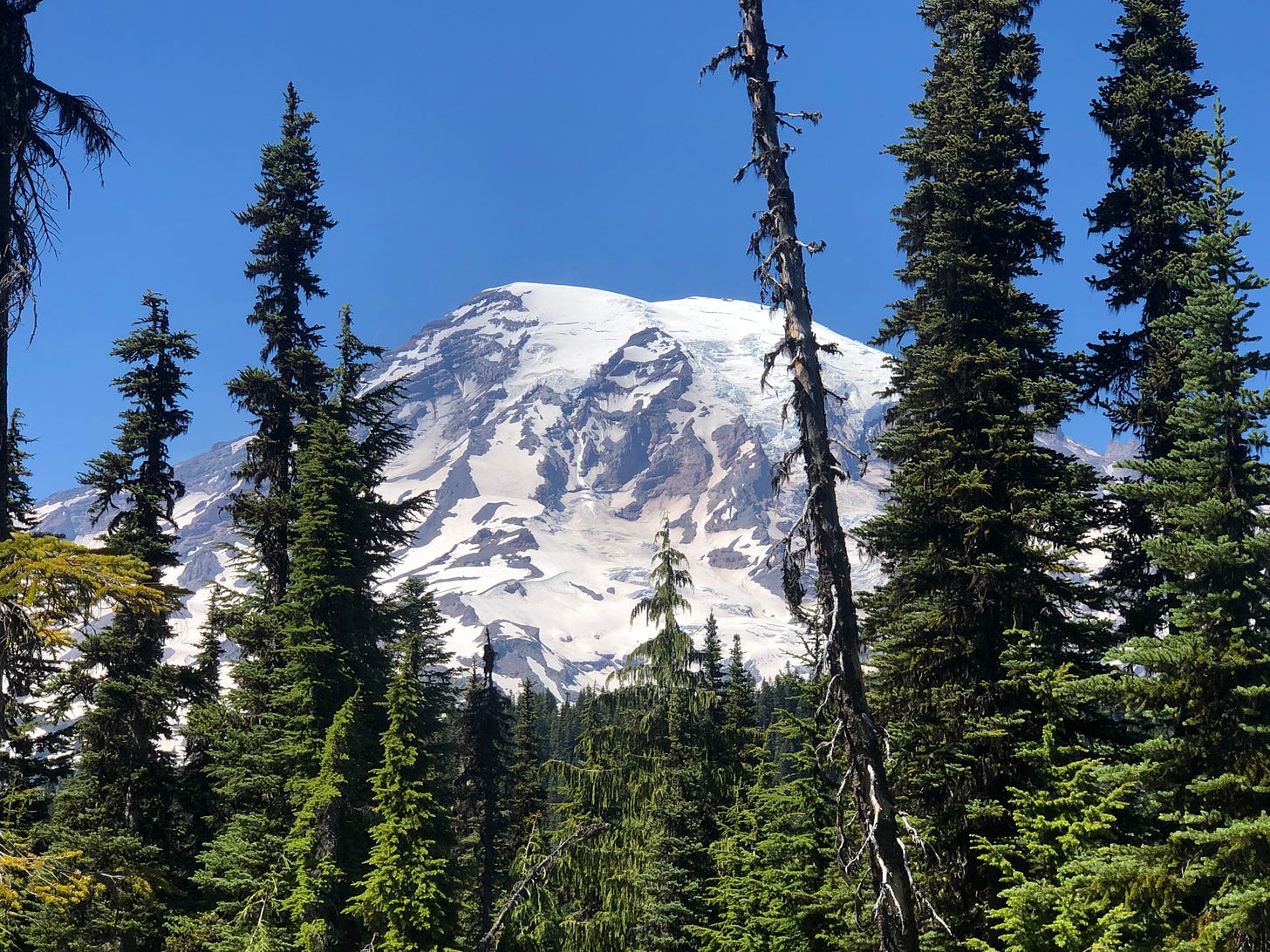
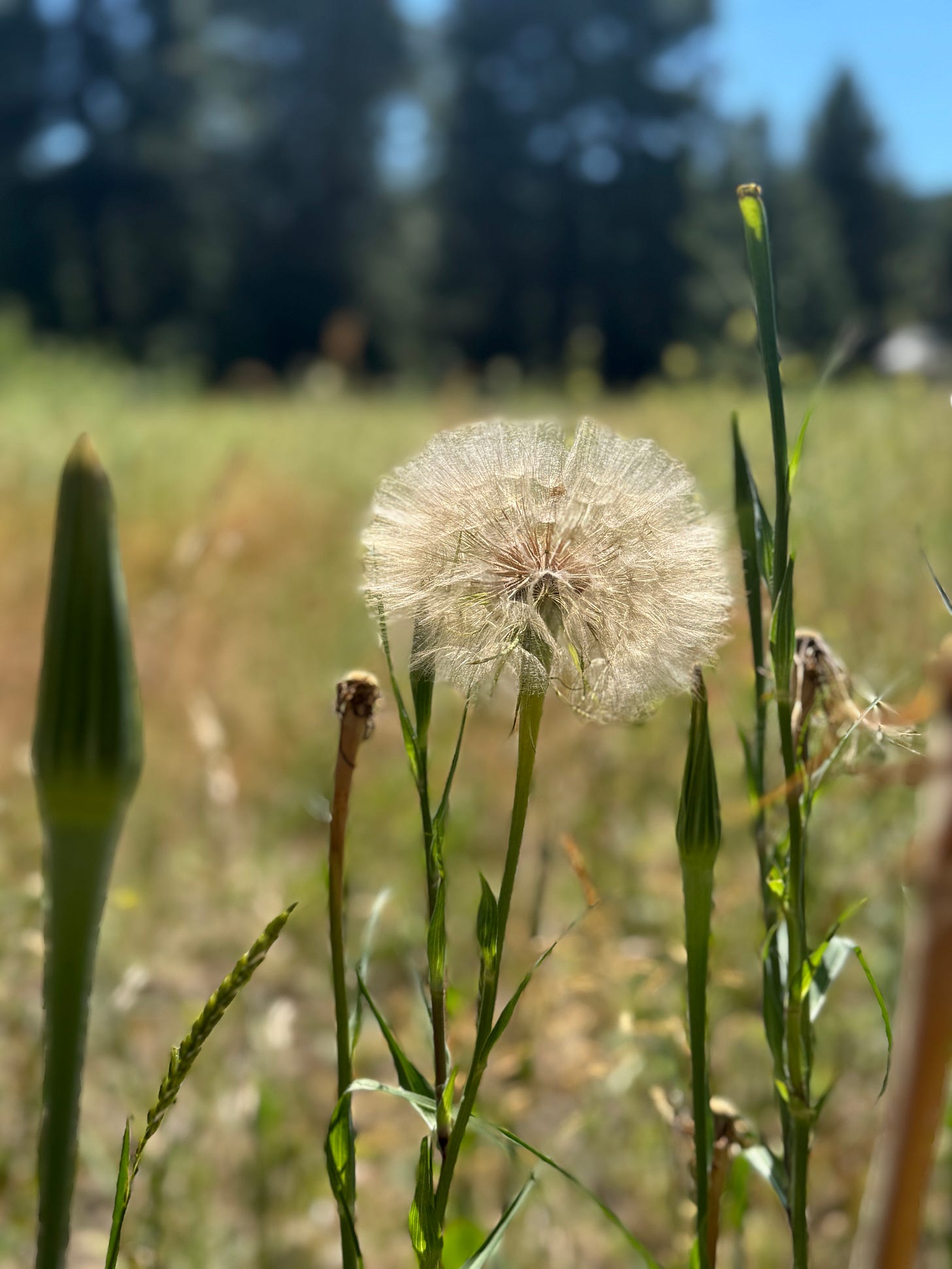
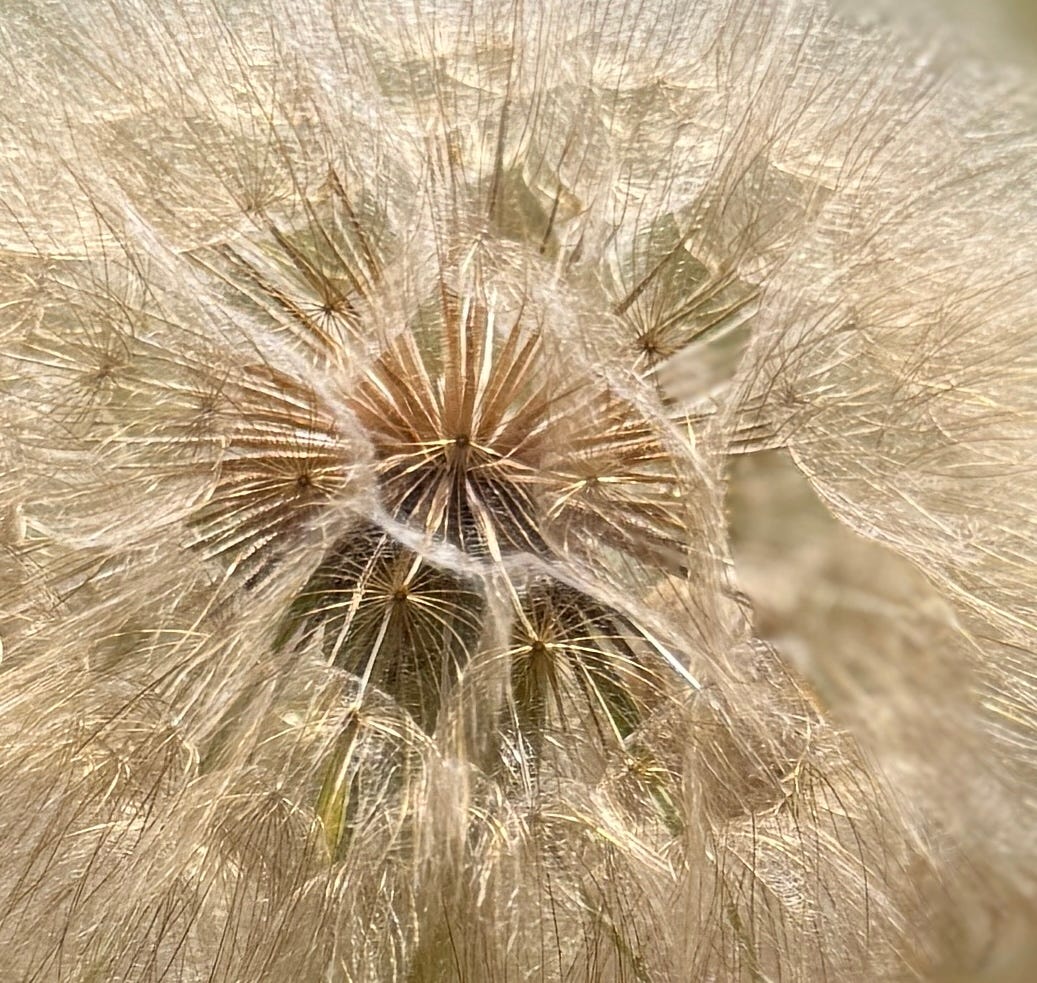
What a moment, Stephanie! That little slug curled in a maple leaf is such a gentle, vivid reminder of what happens when we choose tenderness over haste, and stay open to wonder even in the messiest corners. Thanks so much for showing us that beauty doesn’t just survive in a world on fire … it beckons, quietly, waiting for someone to notice.
I'm wondering if you've read 'The Sound of a Wild Snail Eating' (an illness memoir) by Elisabeth Tova Bailey? I think you and your husband would delight in its gentle revelations. 🙏💚🐌
Your lovely essay reminds me of the first day of my herbal apprenticeship. I was asked what brought me there. Waves of tears came up and I couldn’t speak for sometime. And then when I could finally choke out some words - a sad child’s voice came out of me and said: “I..lost my wonder.” I think it is the saddest sentence I’ve ever spoken.
I’m joyful my wonder has returned and I now experience a daily luminosity that I had missed for decades (while trying to act in a socially acceptable way). But I feel so sad for the overwhelming majority of people who’ve lost their wonder. Wonder is the answer to healing ourselves and the earth… and so we must be on watch… you’ve inspired me to go out and experience some wonder this morning.